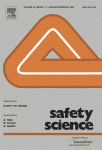Safety culture and behavioural change at the workplace
Background
It is generally accepted that improving safety culture makes an organization more effective in preventing organizational and individual accidents. It is also recognized that to improve safety culture, it is necessary to understand how “unwritten rules” (beliefs, values, norms and assumptions) shape behavior throughout an organization, and to determine how such behavior affects safety performance. It then becomes possible to take several types of initiatives, including the use of various methods for changing behavior in the workplace in order to enhance safety performance. Thus, improving safety culture leads to an emphasis on behavior-based safety.
This NeTWork workshop brought together safety experts from different disciplines and nations to examine these propositions and determine what has been learned about improving safety culture and promoting behavioral change in several technological sectors which pose accident risks: e.g. transportation systems, chemical and oil facilities, energy plants and medical organizations.
The purposes of the workshop were to develop collective knowledge derived from research and practice about the efficacy of improving safety culture and promoting behavioral change for the purpose of reducing accidents; to illuminate uncertainties, obstacles and boundaries; to learn from successful practices; and to derive an agenda of future research needs.
The workshop comprised three sessions:
-
Safety culture and its relation to safety performance in the workplace
-
Implementation of a sustained safety culture and behavioral change
-
Evaluation and future directions
The following discussion indicates some of the core issues and themes that were addressed.
Safety culture and its relation to safety performance in the workplace
In the first session, participants examined conceptualizations of safety culture in theory and practice, the strategies that can be pursued to improve safety culture, and the implications of these strategies for promoting behavioral change.

Safety culture has different meanings to different people. Some use the term broadly to mean organizational culture, others say it is a discrete subculture which must harmoniously co-exist with other subcultures within an organization (such as “quality culture” and “compliance culture”). In addition, some see safety culture as a reflection of national culture and thereby shaped by its socio-economic context, whereas others hold that it is a construct shaped by technological expertise and having universal features irrespective of national or societal context. Clarifying these different conceptualizations is important because it helps explain how the concept is used by different types of organizations (e.g. a multinational company, a national organization subject to detailed regulation, a firm subject to local social controls) and facilitates evaluation of changes and outcomes in these organizations.
Various strategies to improve safety culture and change workplace behavior will be considered. For example, one option is to start with organizational measures of safety (such as accidents, near misses, injuries, lost productivity, etc.), then identify the contributing factors (technical, managerial, worker behavior, etc.), and then choose the behavioral and other factors to be addressed by using cost-benefit analysis or other decision methods. In this strategy, a key issue is whether to take a holistic approach or focus on task-related subsets (e.g. maintenance, operations, supervision, compliance auditing, etc.). Although the latter approach is often preferred because it is less complex and less costly, readily targets worker performance, and minimizes deeper organizational or technical changes, it may produce internal dissonance, unfairly or inappropriately allocate responsibilities, and fail to achieve optimal safety performance.
Another option is to address the psychological and cultural determinants of individual or group behavior, such as attitudes, values and norms, in order to understand how these “unwritten rules” cause behavior which conflicts with or undermines learning processes, performance of operational procedures, and other rule-based safety functions. This approach presents several challenges. There is considerable uncertainty about the influence of psychological and cultural factors on safety performance and the effects of situational and extra-organizational circumstances, and these lead to difficulties in devising appropriate means of modifying the behavior of workers, supervisors and managers. Behavior modification involves additional complexities about learning processes, incentives, knowledge transmission channels, and individual and group decision-making under uncertainty, for example.
These options will raise a number of other issues for discussion, such as how to relate the holistic aspects of safety culture to specific safety features and workplace behavior, and how to cope with dynamic external factors (social, economic, political, regulatory) which cause change in safety culture over time (e.g. recent emphasis on protection against terrorists).
Implementation of a sustained safety culture and behavioral change

The second session focused on the actual features and issues involved in implementing safety culture improvement and behavioral change, based on organizational experience in several technical sectors (energy, chemical, oil, transport and medical). Accidents in these sectors are of major concern because they cause injuries, illnesses and deaths, damage to natural resources and property, business losses and social dislocations.
Safety programs differ among organizations and technical sectors due to many variables including technological uncertainties, operational experience, accident history, the likelihood and magnitude of foreseeable accidents and types of harms in the future, societal concerns and political pressures, regulatory oversight, costs, insurance coverage, and vulnerability of organizational continuation. As a result, organizations differ in the attention they allocate to technical, managerial and behavioral aspects of safety. For example, some emphasize maintenance of technical barriers and physical containment, while others emphasize worker training and organizational learning.
Thus, a threshold issue for discussion is whether an organization’s safety program gives sufficient attention to safety culture and the unwritten rules that shape behavior in the workplace. This discussion will be based on observations and studies of organizations by workshop participants and attempt to derive criteria or principles for addressing this issue.
Another issue to be addressed is the adequacy of efforts made to improve safety culture and change workplace behavior in those organizations that have a safety culture component of their safety program. Methods used to discern unwritten rules which shape behavior in the workplace, to target certain behaviors for change, and to promote such change, will be discussed from a critical and analytic perspective by participants with different disciplinary backgrounds.
In this regard, a number of derivative questions will be raised for discussion. Does experience indicate that the outcome of safety culture improvement can be linked to different domains of safety performance? To what extent (and why) is the robustness of behavioral change dependent on teamwork attributes (trust, climate, etc.) and requisites for compliance with safety rules? What factors make feedback and learning systems that engage the workforce successful at promoting behavioral change? What has caused feelings of manipulation or created resistance to change?
Further questions for discussion relate to external regulatory and policy influences. Do different types of regulations have differing influence on safety culture and behavior (e.g. prescriptive technical rules and standards, more flexible performance-based or “process safety” rules, regulatory incentives which encourage organizations to voluntarily improve their safety and environmental management systems, regulatory requirements for compliance audits and reporting of violations). Do policies and societal norms establish boundaries against efforts to promote certain behavioral changes because they would be excessive in transferring responsibilities and burdens for safety from management to the workforce? Do other policies and norms for protecting worker privacy and autonomy create obstacles for organizations that want to determine unwritten rules and evaluate behaviors in order to improve safety performance?
Evaluation and future directions
In the third session, presentations and discussion focused on evaluating and managing the process of improving safety culture and changing behavior in the workplace. When an organization undertakes the process, the stakes are high. Organizational resources must be allocated, disruptions must be minimized, operations must be continued, organizational coherence must be maintained, and improvement of safety performance is expected. Thus, prudent management will need methods and metrics to evaluate and guide progress.
But after an organizational effort to change safety culture and workplace behavior has been completed, is evaluation limited to outcome data on accidents and injuries, or is it possible to evaluate the quality or robustness of the intended changes on a real time basis? And if inadequacies can be detected, will evaluation methods be capable of determining the causes so that corrective action can be taken? Developing such methods for holistic evaluation requires psychological and behavioral analytic capabilities which may exceed the current state of the art. However, qualitative evaluation of discrete elements of a safety culture, such as an organizational learning system intended to use near miss reporting to promote behavioral change, or a subset of workplace behavior such as reporting near misses, may be feasible.
The development of qualitative evaluation methods would also be of value to regulators. At this time, regulators of worker and public safety rely mainly on rule compliance and outcome data to determine the adequacy of safety management systems and therefore act to improve safety after an accident occurs or a required procedure is violated. New evaluation methods would enable regulators to take preventive action on the basis of latent inadequacies in safety culture and workplace behavior.
Workshop organizers
-
Markus Schoebel, Technical University of Berlin
-
Michael Baram, Boston University
Outputs

The papers presented during the workshop and the following discussions led to the publication of a special issue of the journal Safety Science.
- Baram, M. & Schöbel, M. (Eds) (2007). Safety culture and behavioral change at the workplace. Safety Science, 45(6).
Image credit:
- http://www.flickr.com/photos/hoshner_sigmaniax/
- http://www.flickr.com/photos/lenscrack/5577431429/